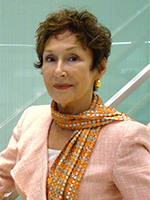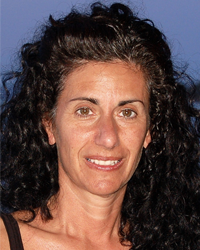Reimagining the experience of aging for Black elders has long been necessary and I believe is now more urgent than ever. The Aging While Black movement is rooted in a profound commitment to illuminate and address the unique experiences of Black elders in America—their triumphs, contributions and challenges.
As a catalyst in this movement and author of the soon to be released, Aging While Black: A Radical Reimagining of Age and Race in America (Manuscripts, 2025), I am grateful for the opportunity to contribute to this special edition of Generations Today and share the work and insights that have shaped our vision.
The origins of Aging While Black stem from a lifetime of experience, observation, engagement, and activism. My personal story, marked by 40 years of public service and community leadership, has been deeply intertwined with the daily realities of Black elders. From witnessing the struggles of my mother and great-grandparents to leading initiatives at the intersection of social innovation and equity, I have seen up close how systemic barriers and cultural strengths confront each other to shape the aging experience for Black Americans.
The book, Aging While Black, serves as both a manifesto and a call to action. It meets head on the pervasive neglect and insensitivity that have long defined the aging journey for Black individuals—actions that drive health disparities, economic obstacles and societal narratives that too often diminish the agency of Black elders. But this work is not solely an examination of obstacles; it also is a celebration of strength, wisdom and the vibrant cultural traditions that have sustained Black communities for generations.
‘I aim to encourage readers to see Black elders as vital contributors to our communities and to inspire collective action.’
The movement is built upon three core pillars: Recalibrating the Village, Embracing Innovation, and Leaning into Sankofa. These pillars guide our work in redefining how we view and engage Black elders, placing their well-being and experiences at the center of systemic and community-based change. In the book, I deeply examine these concepts, exploring how a reimagined approach to aging can yield powerful outcomes not only for Black elders but for entire communities.
Recalibrating the Village emphasizes the importance of interconnected support systems that extend beyond traditional family structures and include churches, local organizations and community leaders. This idea draws from the historical role of the village—a community bound by shared responsibility—in embracing and sustaining its elders. By fostering stronger, culturally attuned networks, we ensure that aging does not mean isolation, but an opportunity for continued contribution and connection.
Embracing Innovation highlights the critical need to harness technology as tools for empowerment. The digital divide and the unequal access to technological resources are barriers that disproportionately affect Black elders, yet technology, when leveraged appropriately, can bridge gaps in healthcare, social connection and education. This pillar advocates for equipping Black elders with the knowledge and tools to confidently navigate an increasingly digital world.
The third pillar, Leaning into Sankofa, underscores the power of cultural wisdom through a deeply intergenerational lens. Sankofa, an Akan symbol meaning “to go back and fetch it,” reminds us that the past holds invaluable lessons for guiding the future. This pillar embodies the concept of reciprocal wisdom sharing, where elders impart their lived experiences, rich with determination, sacrifice, and hope, to younger generations who, in turn, contribute fresh perspectives and renewed energy. By centering and integrating these shared insights into the broader societal narrative, we create a continuous flow of learning and growth that benefits all.
This special edition of Generations Today presents an invaluable platform to extend these themes and share diverse, authentic messages that resonate with the hearts and minds of readers. The articles that follow will amplify the experiences of Black caregivers navigating dementia care, the transformative power of intergenerational bonds, and the vital role of self-care in caregiving—each one a testament to the complexities and richness of aging while Black.
Through these articles, I aim to encourage readers to see Black elders as vital contributors to our communities and to inspire collective action that uplifts their voices, dismantles barriers, and fosters environments where they thrive. This series is more than a collection of narratives; it is a clarion call to recognize the humanity, strength and indispensable value of Black elders.
I invite you to join me on this journey—to read, reflect, and engage. Together, we can create a future where aging while Black is not a struggle to be managed but an experience to be honored and celebrated. This is an opportunity for transformation, and I am honored to be a part of it.
Raymond A. Jetson is an AARP Purpose Prize winner and Next Avenue Influencer in Aging. He has served as the catalytic force that has powered the evolution of Aging While Black.









